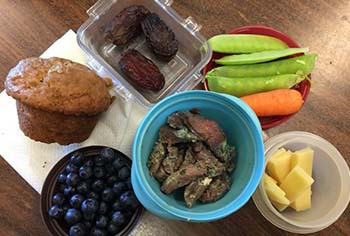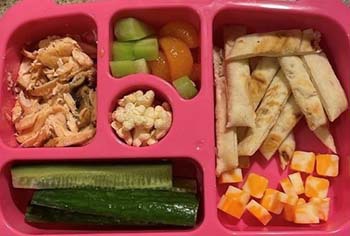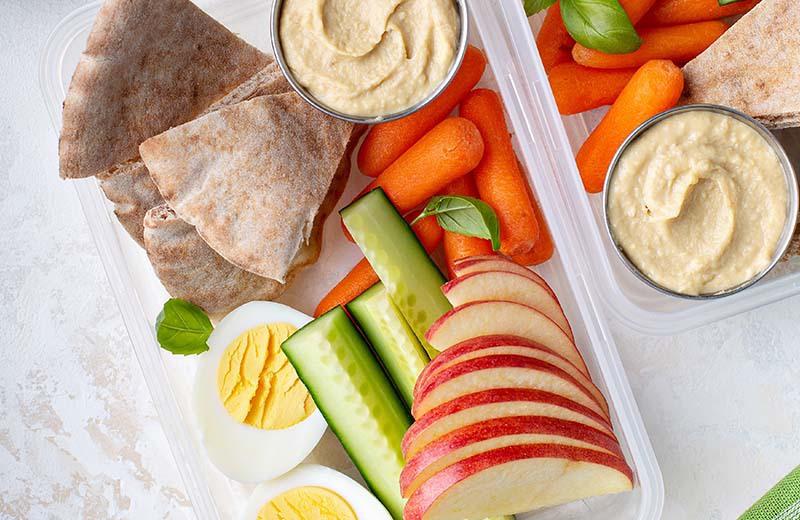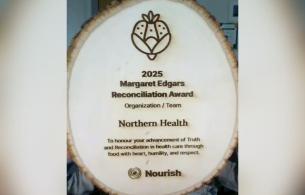Summer is almost over, and families will soon be back to familiar school routines. For some, this may feel like a relief; for others, not so much. One thing many parents and guardians are not stoked about? Packing school lunches. If you find this daunting or are looking for some lunchbox inspiration, these tips and resources may help.
“Snacky’” lunches for the win
While sandwiches and leftovers make good lunch options, my go-to is the “snacky” lunch. This consists of smaller amounts of different food items that require little to no cooking. For Lise Luppens, dietitian and mom of a 2nd grader, “snacky” lunches offer many benefits, including more choice.
"Packing mainly a sandwich or a mixed dish for my daughter’s lunch feels "risky" - like putting all my eggs in one basket," says Lise. "If it’s something that she is not keen to eat that day, which happens, there would be few options left in her lunch. Instead, the 'snacky' approach gives her more choice.”

Not only do “snacky” lunches offer more choice, they are completely customizable – you can use the foods already in your fridge or pantry. These lunches are also great for kids who struggle with eating foods that are mixed together. Plus, no more soggy lunches!
Tips for creating “snacky” lunches
If you’re packing food for lunch plus one or two snacks, if can be helpful to aim for five or six different items. The amount you offer of each food will depend on your child’s individual needs.
Mix and match items to include a combination of protein, grains, and vegetables and fruit. For example:
Protein foods
Hard-boiled or scrambled egg; hummus or bean dip; peanuts, nuts or seeds, or their butters; canned or dried fish, shredded or deli meat, cubed, shredded or string cheese; cottage cheese; yogurt; milk; or fortified soy drink, etc.
Grain foods
Crackers, bagel, bannock, pita, naan, waffle, pancake, cereal, granola bar, whole grain muffin, etc.
Vegetable or fruit
Veggie sticks, cherry tomatoes, snap peas, dried seaweed, whole or sliced fruit, berries, fruit cup or sauce, dried fruit, etc.
Here are a few ideas:

- Canned fish, bannock, dried seaweed, cucumber slices, berries, and yogurt
- Cheese cubes, crackers, orange slices, grapes, carrot sticks, and hummus
- Hard-boiled egg, pita, red pepper, apple slices, raisins, and fortified soy drink
- Bran muffin, pumpkin seeds, cheese string, snap peas and fruit cup
- Waffles with seed butter, applesauce, banana, celery sticks and milk
- Cooked pasta, shredded chicken, cherry tomatoes, peas, and melon chunks
More tips
- Prep ahead, if you can. For example, keeping a few hard-boiled eggs in the fridge, cutting up extra fruit or vegetables when making dinner, or making a double batch of muffins to freeze for later.
- Try using a container with divided sections. This can be handy for keeping food items separated. Packing items in smaller, individual containers also work too.
- Pack a reusable water bottle. Plain milk, fortified soy milk, or a smoothie in a thermos are also hydrating and nutritious drink options.
Resources
- Lunches to Go handout (Vancouver Costal Health)
- Peanut and Nut Aware Lunches and Snacks (Northern Health)
- Re-fresh Your Drink (Northern Health)














Comments